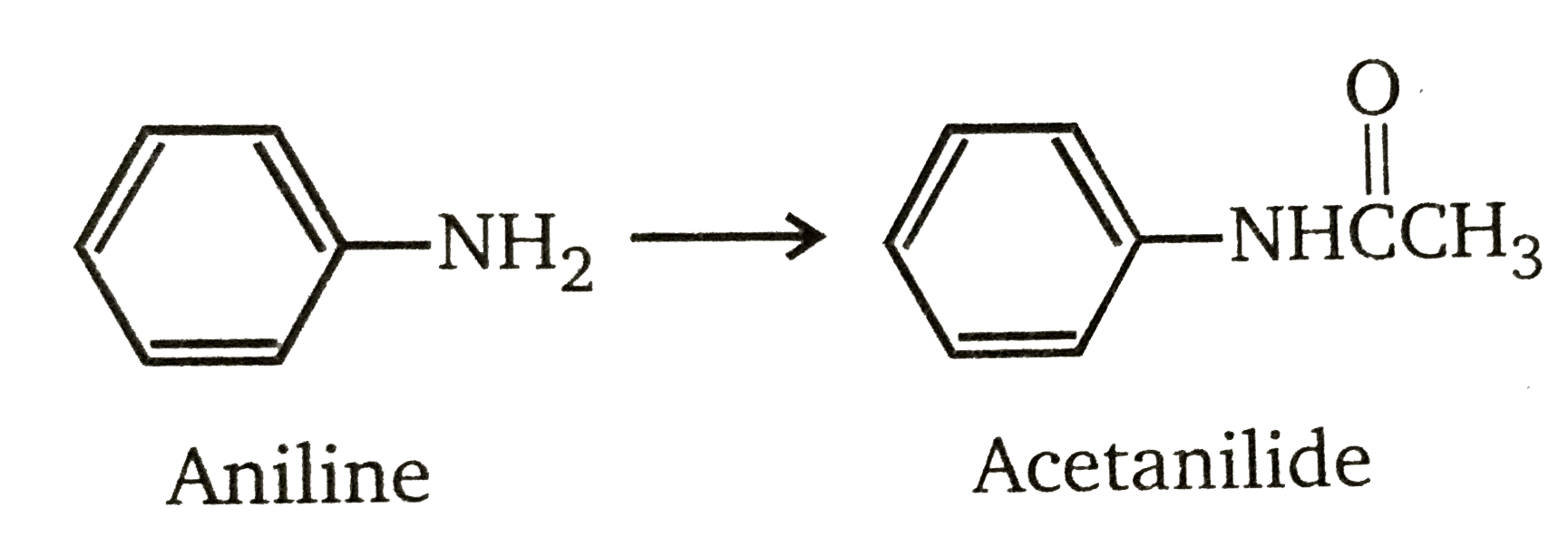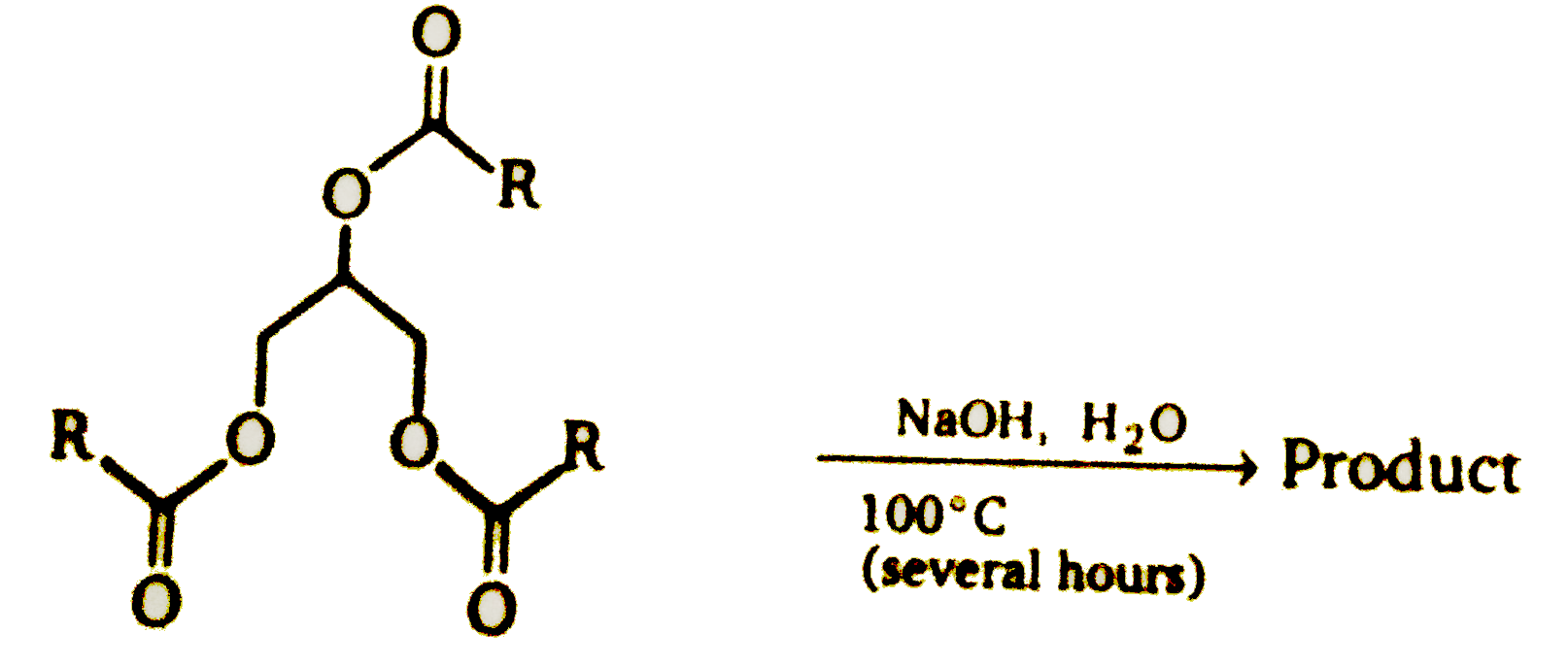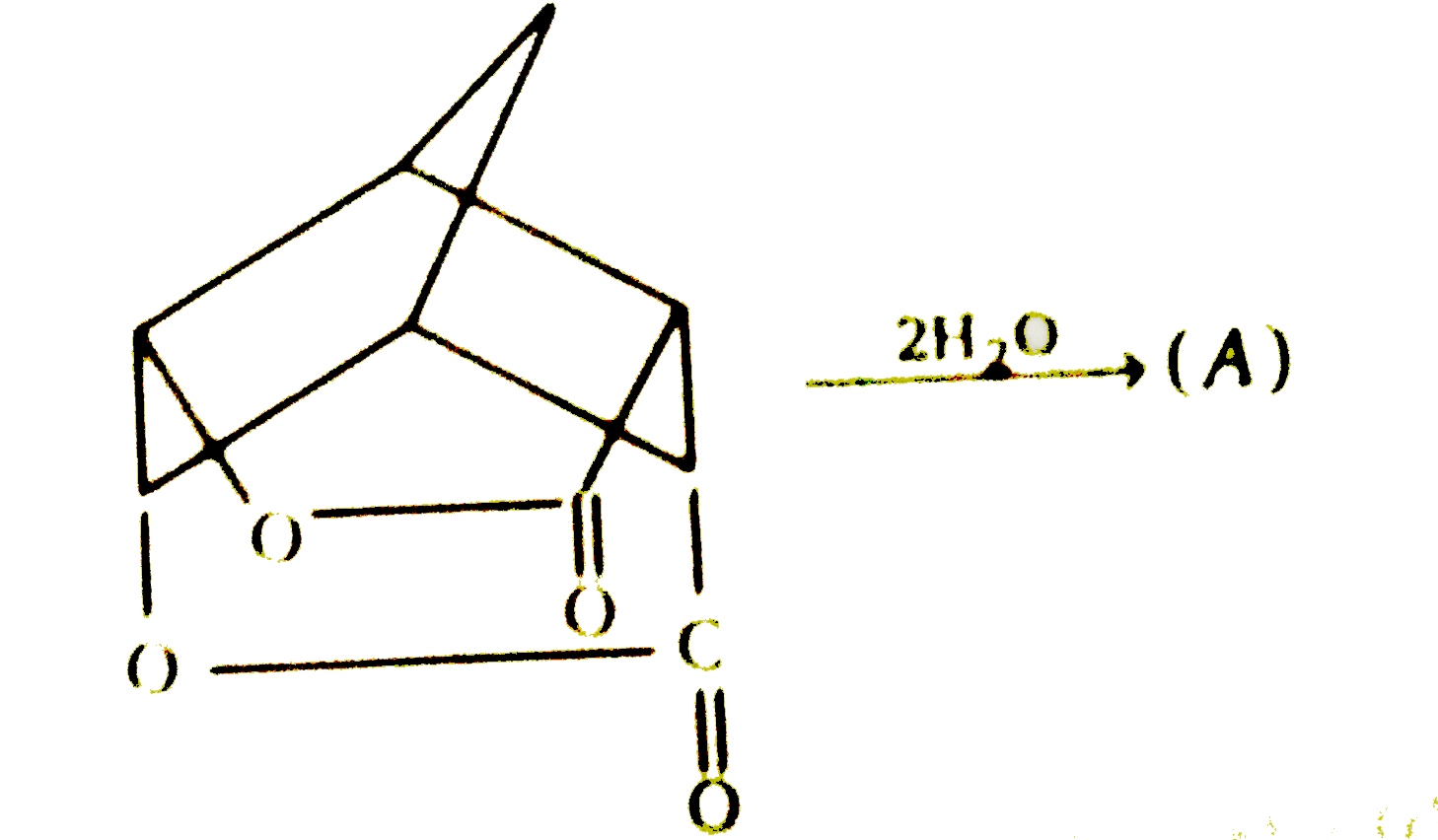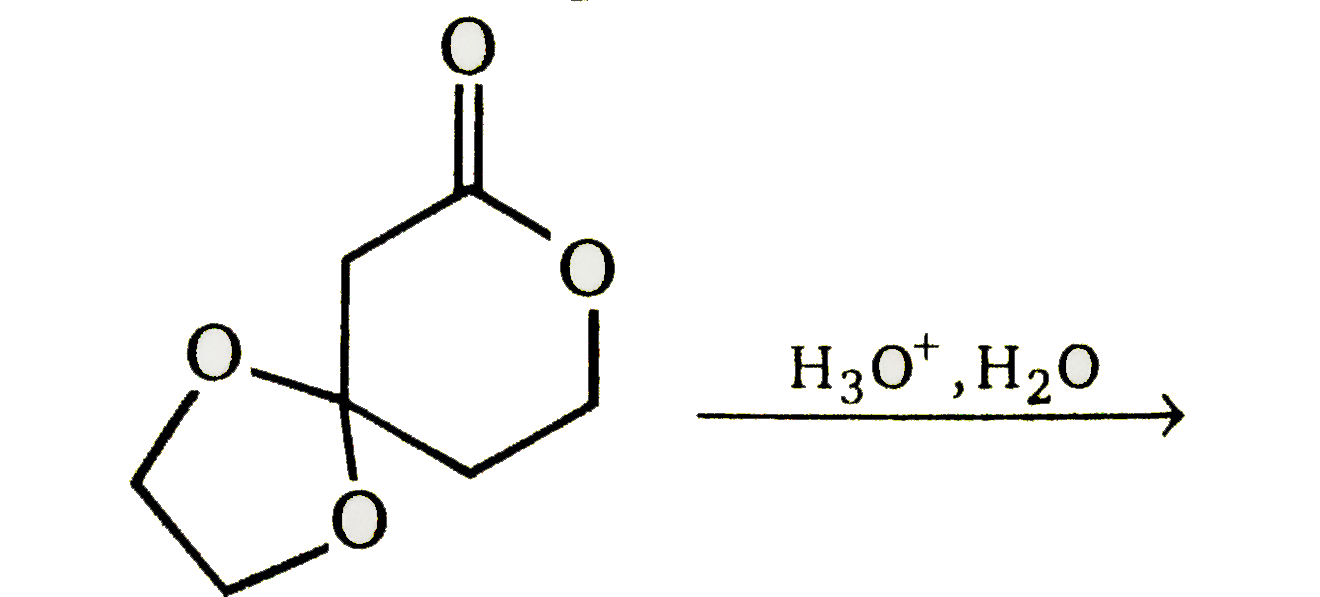Complete Solutions to Exercise of chapter CARBOXYLIC ACID AND THEIR DERIVATIVES of Class 12 book with complete answers and questions
| Class 12 | CHEMISTRY |
| Chapter | CARBOXYLIC ACID AND THEIR DERIVATIVES |
| MS CHOUHAN | Exercise |
| Number Of Questions | 69 |
| Academic Year | 2023-24 |
Identify C in the following sequence of reaction:
 03:38View Solution
03:38View SolutionSaponification (basic hydrolysis) of `C_(6)H_(5)underset(O)underset(||)(C)O/CH_(3)` will yield:
`[O/=` mass -18 isotope of oxygen]02:23View Solution
Product (X) of the reaction is:01:54View SolutionWhich of the following is the correct order of decarboxylation of `beta`-keto carboxylate anion?
 02:11View Solution
02:11View SolutionComplete the following reaction
 02:30View Solution
02:30View SolutionWhich `beta`-keto acid shown will not undergo decarboxylation?
01:43View SolutionChoose the response that matches the correct functional group classification with the following group of structural formulas.
 01:37View Solution
01:37View Solution Product (P) of the reaction is: 02:35View Solution
Product (P) of the reaction is: 02:35View Solution
Product (X) of the reaction is:01:43View Solution Product (A) obtained is: 02:19View Solution
Product (A) obtained is: 02:19View SolutionWhich of the following acid on heating gives geometrical isomers as a product?
06:05View Solution 03:14View Solution
03:14View Solution 03:48View Solution
03:48View Solution 03:53View Solution
03:53View Solution
In above reaction identify major product (A) of the reaction:04:06View SolutionAn optically active compound 'X' having molecular formula `C_(4)H_(8)O_(3)` . It evolves `CO_(2)` with `NaHCO_(3)` . 'X' on reaction with `LiAlH_(4)` gives achiral compound. 'X' is:
03:21View Solution`CH_(3)-overset(O)overset(||)(C)-O-CH_(2)-CH_(3)+H-O/^(-)rarr (O/=O^(18))` One of the product of the reaction is:
01:49View SolutionIdentify final product in the following reaction,
`CH_(3)underset(OH)underset(|)(CH)COOH overset(Delta)rarr` Product02:23View SolutionSelect the final product from this sequence of reactions. Acetoacetic ester `overset(NaOEt)rarr overset(CH_(3)I)rarr overset(NaOEt)rarr overset(CH_(3)CH_(2)CH_(2)Br)rarr`
02:38View Solution 01:33View Solution
01:33View Solution`CH_(2)(CO_(2)Me)_(2)+? overset((i)Na)underset((ii)AcOH)rarr CH(CO_(2)Me)_(3)`
Which of the following reactants will complete the above reaction?01:48View SolutionArrange the following in order of increasing reactivity (least `rarr` most) towards nucleophile
`{:(CH_(3)overset(O)overset(||)(C)Ounderset(1)(CH_2)CH_(3),underset(2)(CH_(3)overset(O)overset(||)(C)Cl),underset(3)(CH_(3)overset(O)overset(||)(C)NHCH_(3))):}`02:23View SolutionChoose the best sequence of reactions for transformation given. Semicolons indicate separate reaction steps to be used in the order shown.
 02:03View Solution
02:03View SolutionA key step in the hydrplysis of acetamide in aqueous acid proceeds by nucleophilic addition of:
01:54View SolutionWhich reaction is not possible for acetic anhydride?
01:27View SolutionAll but one of the following compounds react with aniline to give acetanilide. Which one does not?
 02:52View Solution
02:52View SolutionWhich of the following best describes the nucleophilic addition step in the acid-catalyzed hydrolysis of acetonitrile `(CH_(3)CN)`?
01:46View SolutionThe major product expected, when Phthalamide is treated with `NaOH`, is
01:57View SolutionWhich of the following acid remains unaffected on heating ?
00:45View Solution
At which value of n the formation of six membered ring takes place?02:06View SolutionComplete the following reaction
 01:11View Solution
01:11View SolutionComplete the following reaction
 01:30View Solution
01:30View Solution
Product (A) of the reaction is:03:00View Solution`{:(underset(|)CH_(2)-O-COR),(underset(|)CH-O-COR_(2)+3NaOH rarr(A)+"salt of fetty acid(soap)"),(CH_(2)-O-COR_(3)):}`
Product (A) of the reaction is:01:38View Solution`CH_(3)-underset((d))underset(Et)underset(|)(CH)-underset(("d=dextro rotatory"))(OAcoverset(HO^(-))rarr)` Product of the reaction is:
01:04View Solution Product (A) of the reaction is: 01:45View Solution
Product (A) of the reaction is: 01:45View Solution Identify the product (A). 01:05View Solution
Identify the product (A). 01:05View Solution
Above reaction is an example of:01:17View SolutionWhich of the following is an intermediate formed in the reaction shown below
`CH_(3)-overset(O)overset(||)(C)-CI +NH_(3) rarr` Intermediate `rarr` product.01:20View Solution
Product is obtained in the above reaction is:01:20View SolutionThe reaction of sodium with acetyl chloride proceeds through which of the following
01:35View SolutionWhich of the major product of the following reaction?
`CH_(3)-overset(O)overset(||)(C)-CI overset(H_(2)S)rarr` product01:05View SolutionWhich is the major product of the following reaction?
 01:33View Solution
01:33View SolutionEthanoic acid `+3`-methyl-1-butanol `underset(H_(2)SO_(4))underset("traces")hArr(A)`, Compound (A) is:
01:38View SolutionComplete the following reaction
 02:18View Solution
02:18View SolutionWhich of the following compounds will undergo decarboxlation on heating?
 01:26View Solution
01:26View SolutionWhich one of the following is not an intermediate in the generally accepted mechanism for the reaction shown below?
`CF_(3)overset(O)overset(||)(C)OH+CH_(3)underset(OH)underset(|)(CH)CH_(3) overset(H_(2)SO_(4))rarr CF_(3)overset(O)overset(||)(C)Ounderset(CH_(3))underset(|)(CH)-CH_(3)+H_(2)O`13:41View Solution 01:23View Solution
01:23View SolutionIdentify the compound C in the following sequence:
`(CH_(3))_(2) CHCH_(2)C-=N overset(HCI,H_(2)O)rarr` compound `A overset(1.LiAIH_(4))underset(2.H_(2)O)rarr` compound B `overset(PC C)underset(CH_(2)CI_(2))rarr` compound C01:52View SolutionWhat is the final product (B) of this sequence?
 01:52View Solution
01:52View SolutionWhich of the following undergoes decarboxylation most readily on being heated?
01:30View SolutionWhat is compound Z?
`CH_(3)CH_(2)CH_(2)Br overset(NaCN)rarr X overset(H_(3)O^(+))underset("heat")rarr Y overset(CH_(3)CH_(2)OH)underset(H^(+))rarr Z`07:41View Solution`CH_(3)-CH=CH-CH_(2)-CO_(2)Hunderset(Delta)rarr (X)` (major), Producy (X) is:
01:33View Solution`H-O-overset(O)overset(||)(C)-(CH_(2))_(n)-overset(O)overset(||)(C)-O-Hunderset(Delta)rarr` product, At what value of (n) given compound will not evolve `CO_(2)` gas?
01:22View Solution`overset(" "CO_(2)H)overset(|)underset(" "CO_(2)H)underset(|)(" "(CH_(2))_(n)`, If `(n=4)` then di-carboxylic acid would be known as:
00:44View Solution
Product (A) of the above reaction is:01:53View Solution
Identify (A)02:42View Solution
How many product will be formed when above compound undergo de-carboxylation?01:06View Solution 01:08View Solution
01:08View SolutionProducts obtained in the given reactions are shown below.

The number of possible products for x and y are:02:05View Solution
Product (A) of the above reaction is:01:55View SolutionWhich of the following pair is `C_(2)`-epimer?
03:02View SolutionTotal number of enol possible for the compound formed during given reaction will be (including stereoisomer):
`CH_(3)Mgbr+CH_(3)CH_(2)-overset(O)overset(||)(C)-CI rarr`02:20View SolutionWhat is the product of the following reaction?
 03:42View Solution
03:42View Solution
Hence the product (Y) in the above sequence of reactions, is:03:42View Solution 01:48View Solution
01:48View Solution`CH_(3)CH_(2)CH(OH)CH(CH_(3))_(2)+CH_(3)COCI overset("base")rarr CH_(3)CH_(2)CH(OCOCH_(3))CH(CH_(3))_(2)+HCI` In the above reaction, if the reactant alcohol is a pure R-isomer the product would.
02:23View SolutionThe order of `S_(N)1` reactivity in aqueous aceic acid solution for the compounds
`underset((1))(H_(3)C-overset(O)overset(||)(C)-CH_(2)-CI)" "underset((2))(H_(3)C-CH_(2)-CH_(2)-CI)" "underset((3))((H_(3)C)_(3)C-CI)`01:40View SolutionMatch the column (I) and ((II). (Matrix)
 02:35View Solution
02:35View Solution
Exercise questions and complete solutions for chapter CARBOXYLIC ACID AND THEIR DERIVATIVES of MS CHOUHAN CHEMISTRY (HINGLISH) of Class 12
